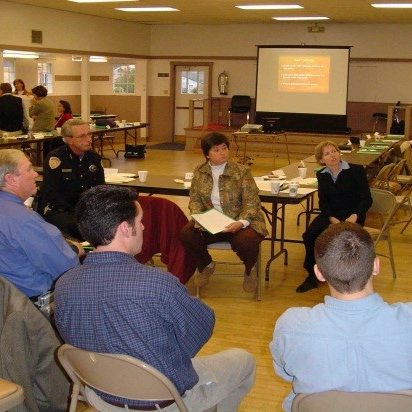Developing a successful Safe Routes to School initiative requires collaboration between many entities including schools, school districts, cities, townships, villages, road commissions, and community organizations. It is important to establish a core group of champions that can offer different perspectives on your project. This core group is known as the SRTS Team and should be established once your school(s) are registered. This team can be created “from scratch” or it can be part of an existing team or committee.
The purpose of the SRTS Core Team is to:
- To provide leadership and continuity for SRTS in the community
- To generate local support for SRTS
- To leverage community resources to encourage and enable safe walking and bicycling
Your core SRTS Team should include:
(click on a team member to learn more!)
The coordinator will serve as the main contact person for the school’s SRTS program, and help organize meetings, gather grant materials, and write and submit the final grant application. This person can be a school official, consultant, parent or community volunteer, but should be invested, organized, and a champion of health and safety in the community.
School leadership plays a key role in helping promote the Education and Encouragement portions of the project, in turn shifting the culture of walking and biking for students on their campus.
Teachers, especially health teachers, gym teachers, or student wellness counselors can provide wonderful insight on a SRTS team, as they often have first-hand knowledge of their student’s needs, challenges, and motivations when it comes to physical activity and transportation.
PTA boards, parent volunteers, and parents who have students that already walk or bike to school are a key voice on the SRTS team. They will provide insight as to why they do or do not let their student walk or bike, and offer realistic accounts of the infrastructure problems in their neighborhoods.
Having a few student leaders on your SRTS team will provide eye-opening perspectives on how students perceive their safety, the routes they will or will not take, and how they feel about their community as a whole. It’s also a great opportunity to introduce students to real-life skills associated with being a city planner or official, an engineer, or a health educator.
Involving a district-level administrator is important for getting upper level buy-in for long term success. It is helpful for an individual school to have support and approval on the district level if an issues were to arise. Also, district-level support may help institutionalize SRTS beyond one school, so it can be offered to more students.
This is an important one, since roadways are often owned by different jurisdictions. Make sure someone from your road commission or city is present, as they will help provide engineering and technical assistance, as well as be able to let you know what work is being constructed already in your area.
While not all communities have their own planner, those that do will have a perspective on the community’s plans for future infrastructure improvements.
Once you’ve established your core team, you may also want to pull together an expanded SRTS Task Force to aid with certain parts of the project. This could include:
- District transportation director
- City or village manager
- City council member or other elected official
- City or county recreation specialist
- City or county public health official or educator
- Local law enforcement
- Trail and/or bicycle group representative
- Neighborhood association or block club member
- Faith-based group
- Local nonprofit agency
- Local service club or other charitable organization

